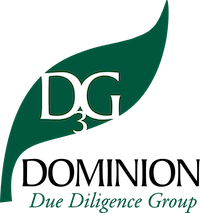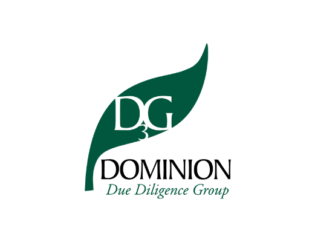
With each year comes new standards and trends in any line of work, and this is no different for us, being a full-service environmental, engineering, and energy due diligence firm. Our established connections and understanding of the industry allow us to get a grasp on these changes quickly and alert you of them!
NGBS 2020 Standards Changes
The National Green Building Standard (NGBS) has released its new 2020 standards. The NGBS is a rating system for homes and apartments approved by the American National Standards Institute (ANSI). These homes, single and multifamily alike, fit specific criteria for their water, resource, and energy efficiency. They focus on the quality of indoor air as well as operation and maintenance.
So what’s changed for 2020? Over the past few years, we’ve seen a shift in demand for multifamily buildings. So NGBS is offering more guidance, focus, and options specifically for multifamily buildings. Much of single-family construction is being replaced with multifamily construction to meet the demand. Part of the appeal of multifamily housing currently is the low maintenance, walkability, transportation, and presence of community. Besides providing affordable luxury with amenities like fitness, game room, and storage, many tenants are leaning towards environmentally conscious living, and complex owners and builders are catering to that.
In light of the 2020 pandemic, we're seeing more discussion around indoor air quality and healthy multifamily living.
Another 2020 trend is indoor air quality and healthy homes. Most living units traditionally share a common/central system (DHW, HVAC, etc.). The downside to this, especially now with the current pandemic, is that the air boundaries between the units aren’t airtight. Part of the new multifamily construction trend will focus on the compartmentalization of the individual units. This will include individual systems, tighter air boundaries, and more tenant control.
Chapter 6 - MAP Guide Changes
The next and possibly most significant change in 2020—Chapter 6 of the Proposed MAP Guide will alter the Green Mortgage Insurance Premium (MIP) Reduction Guidelines.
But what does this mean? Even though we don’t have a final date for the new MAP guide implementations, HUD shared information about the MIP program's changes at the Eastern Lenders Association in March. The most significant difference is that ENERGY STAR for existing buildings and LEED O&M are no longer acceptable certifications for the 223(f) and 223(a7) programs. Meaning for a refinance, the property will either need a prior green certificate earned during the property’s construction or will need to earn a green certification through a remodeling program. For properties that are 15 years or older, NGBS remodel proves to be an effective green building certification. D3G has assisted several projects through this process.
We encourage all developers who plan to pursue a 223(f) in the future, to strongly consider securing a new construction green certification on their new developments.
With that said, newer properties will likely find it challenging to cost-effectively secure the 15% energy efficiency improvements, along with the 20% water efficiency improvements that are required by most Green Building Renovation programs. Knowing this, we encourage all developers who plan to pursue a 223(f) in the future, to strongly consider securing a new construction green certification on their new developments. Even if the property is already designed, there still may be a fair chance to secure a green certification with minor changes. However, once the drywall is installed, you cannot retroactively earn a green building certification.
The other notable change is that qualified energy professionals must prepare data Collection Plans that describe how energy data will be collected for the annual benchmarking, and sampling will not be permitted. Therefore, the property must either have a utility that can provide whole-building aggregated energy data, or the property must install remote energy meters. Past practices of depending on tenants signing data authorization release forms will not be an acceptable practice. Also, early in the year, HUD published a mortgage letter on the annual Statement of Energy Performance (SEP) benchmark compliance process. The guide indicates that SEP’s should be produced by qualified energy professionals.
Until the new MAP guide implementation, all the existing green MIP rules remain in effect. Interestingly, the lifting of the three-year rule for new 223(f)s has created a challenging situation that was not anticipated in the original green MIP program's design. Typically, newer properties that didn’t already have a green certification would secure a SEP benchmark score. If that score was more than 75 and secured 100% of the energy data over 12 months, the property could secure an ENERGY STAR Existing Building Certification. However, the ENERGY STAR program requires that multifamily properties have an average occupancy of at least 80% over those 12 months. That was not an issue in the past, but for newly built properties that are still in the lease-up phase, it becomes a roadblock that can delay access to the green MIP. The existing green MIP guidance offers no workaround other than to wait for the 12-months at an average of 80% occupancy.
As a sidebar, at the Eastern Lenders Association meeting in March, HUD shared plans for a transition period away from ENERGY STAR Existing Building Certification that will apply once the new MAP guide is in effect. Essentially, ENERGY STAR Existing Building Certification will remain an option for 2 years from the date of the 2020 MAP Guide, but only for properties:
- With Certificate of Occupancy less than 3 years before the date of loan application;
- With Existing Building Certification achieved and delivered with the application; or
- If less than 12 months @ 85% occupancy, a Statement of Energy Design Intent (SEDI) indicating 90 with Certification due within 3 months after 12 mos @ 85% occupancy;
- ENERGY STAR® Score of 75 or higher (no repairs, improvements required to achieve score)
So it’s been a busy start to 2020 with lots of changes to the Green MIP program. Stay tuned as we release new episodes of our podcast. Listen to our first episode here.



